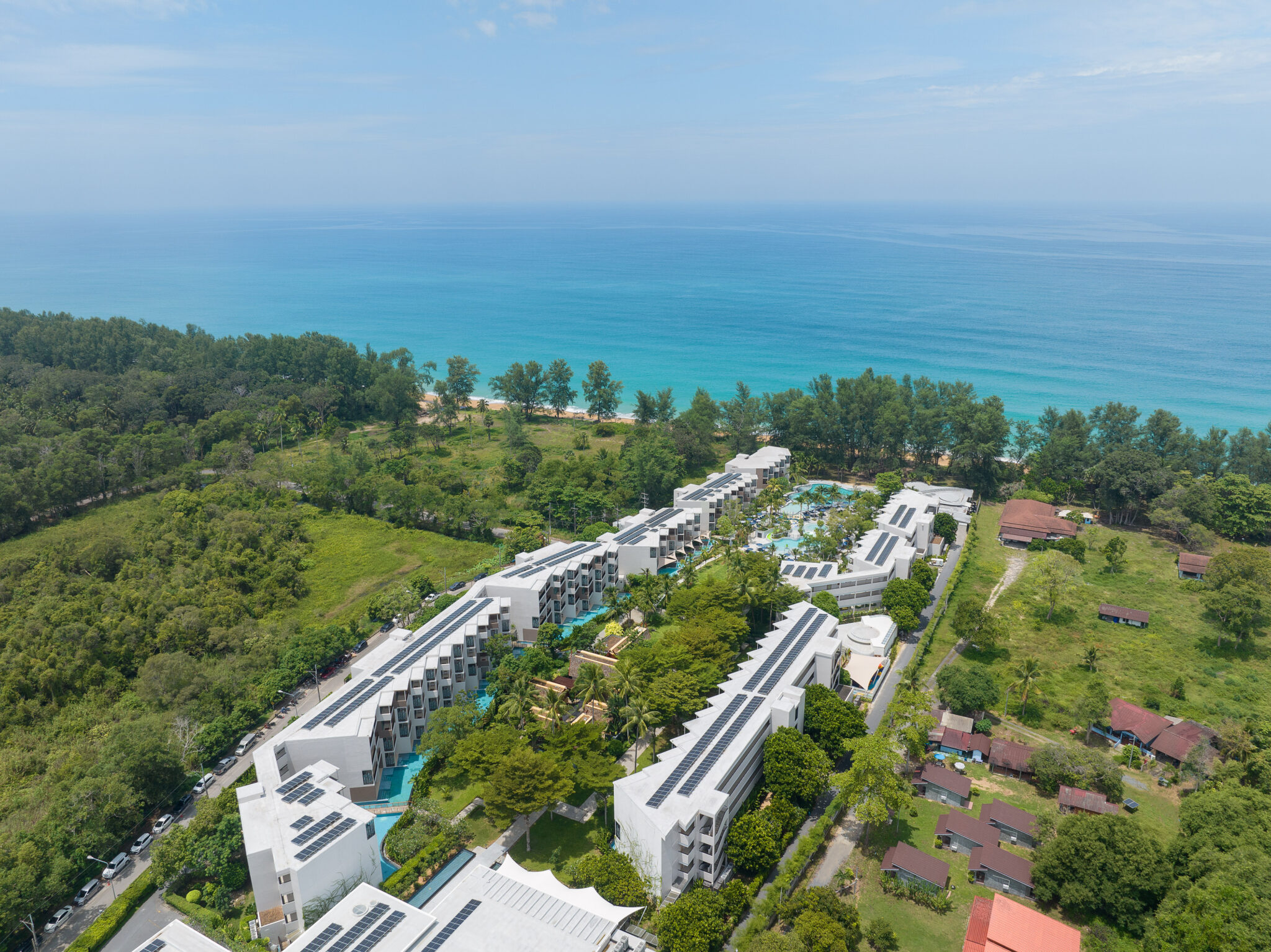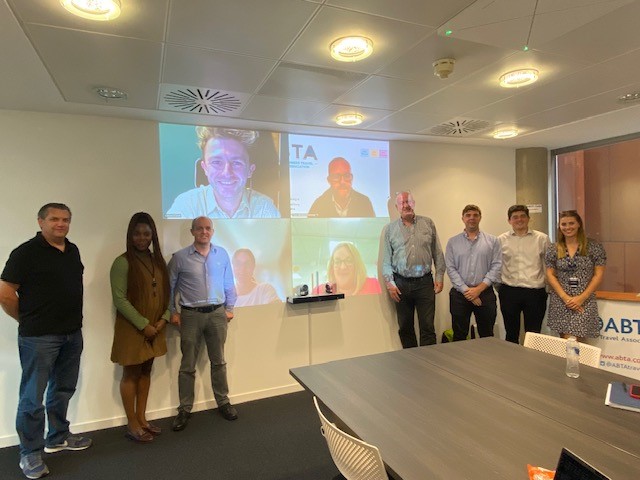ASIA PREPARES FOR RECOVERY
by Andrew J Wood
BANGKOK: How do we sensibly and effectively restart travel and tourism, the industry that employs 1-in-10 workers globally? A workforce that has been decimated by the Covid-19 pandemic.
According to the World Travel & Tourism Council (WTTC) travel and tourism’s direct, indirect and induced impact last year in 2019 accounted for:
•
US$8.9 trillion of global GDP
• 10.3% of global GDP
330 million jobs, 1 in 10 jobs around the world
• US$1.7 trillion visitor exports (6.8% of total exports, 28.3% of global services exports)
• US$948 billion capital investment (4.3% of total investment)
Tourism recovery is the No.1 topic and all sections of our industry are looking and learning. The plethora of webinars popping-up with recovery and ‘next step’ discussions are testament to the energy and interest in getting back to work.
But are webinars useful?
Earlier this week Don Ross suggests that webinars often fall short in good common sense.
“Since the Covid-19 pandemic banished us all to our homes to live under lockdown, we are inundated with promotions for webinars that promise to navigate the travel industry back from the brink to a new norm. The deluge of webinars promises to show us the way forward, but so often when we tune in to the talkfests, they fluff on the details. They avoid the obvious and concentrate on the obscure, I suspect we attend webinars hoping the experts can offer some old fashioned common sense to help us survive the financial storm.”
The tourism industry has taken a huge hit from the coronavirus, the UNWTO puts the loss at US$ 450 billion.
The virus has infected at least 3.48 million people worldwide and killed more than 244,000. Top tourist destinations such as the United States, Spain, Italy and France are among countries with the highest number of infections.
People will only travel again if they feel it is safe to do so – this was best expressed “ In the Covid-19 world, common sense dictates we will travel when it is safe and when we have the spare cash. That’s what we are not addressing in webinars. The pandemic is breaking the bank for everyone, but how will we ensure health safety in order to reboot travel?”
Recovery is upper most in the minds of Skål International and the UNWTO. The CEO of Skål International, Daniela Otero, is a member of the UNWTO Board of Affiliate Members, has recently been attending important meetings to discuss how to structure a response for the tourism sector, especially in the recovery phase, and what should be the priorities to be taken into consideration by governments. Work is already underway on the first drafts of possible reopening protocols applicable to all the sectors of the industry, once governments allow. It will be necessary to move quickly with action as tourism is among the hardest hit industries due to COVID-19 and its consequences.
The UNWTO recalls that tourism has been a reliable driver of recovery in the wake of past crises, generating employment and revenue. Tourism, the UNWTO states,
“Has wide-ranging benefits that have transcended the sector, reflecting its broad-based economic value chain and deep social footprint.”
Around 80% of all tourism businesses are small-and-medium-sized enterprises (SMEs), and the sector has been leading the way in providing employment and other opportunities for women, youth and rural communities and tourism has a great capacity to create jobs after crisis situations. Since the start of the current crisis, UNWTO has been working closely alongside the World Health Organization (WHO) to guide the sector, issuing key recommendations for both high-level leaders and individual tourists. To rebuild and restart travel we are so dependant on air uplift. Once airlines start flying again the industry can recover.
How long that will take is widely discussed. PATA CEO Dr. Mario Hardy said, “The number one question on everyone’s minds is, how long before we recover? This isn’t a simple question to answer.”
Asia he believes, will deliver the largest rebound in travel to the Asia Pacific region in 2021, according to the updated forecast released by PATA. Their research suggests visitors should deliver 610 million visitor arrivals in 2021 (of which 338m are inter-regional). A growth in total visitor arrivals of 4.3% compared to 2019 (585m). The growth in international visitor arrivals (IVAs) is likely to vary by source regions, with Asia expected to rebound with the fastest growth rates relative to 2019. During the expected recovery phase in 2021, Asia should generate significantly improved arrival numbers, rebounding from a loss of 104 million visitors between 2019 and 2020 to grow 5.6% to 338m in 2021 relative to 2019.
Dr. Mario Hardy added, “While we can expect to see severely reduced visitor arrivals into Asia-Pacific this year, and for some time through 2021 as well, there is hope going forward. The travel and tourism sector as we have seen during past calamities, is nothing if not resilient, and we expect to see growth beginning in 2021 and continuing on thereafter. As we rebuild the travel and tourism sector into the future, it is worth considering whether we want it to be ‘business as usual’ or whether we can initiate new policies, procedures and practices that will enable us to see beyond the vision of growth at all costs. Perhaps now, we can give real meaning to the oft-quoted mantra of people before profit.”
It will not be all plain sailing. We will face competition from around the globe for tourists, and our regular visitors – including those from mainland China.
The Hong Kong Tourism Board (HKTB) is positioning itself to respond with an organised recovery plan to welcome visitors as the world begins to slowly recover. To achieve this, HKTB organized a web conference on the 24th April 2020 to provide the latest updates on tourism development and introduce the HKTB’s strategic framework of a tourism recovery plan. HKTB Chairman Dr. Y. K. Pang said that the Covid-19 pandemic has posed unprecedented challenges to Hong Kong tourism and brought global tourism to a grinding halt. He commented that while it was difficult to predict when the industry would recover a V-shaped rebound was impossible in the face of restrictions overseas and flight suspensions. What was certain, the tourism board chairman shared, was that every market would spend hundreds of millions of dollars, or even billions, to chase after tourists as the pandemic had paralysed global travel and battered the industry since February. ”The tourism landscape will be reshaped, there will be a new normal,” he remarked during the web conference to 1,500 industry stakeholders.
Pang also observed, that based on market analysis, mainland tourists and those from short-haul markets would travel domestically soon after the pandemic died down. The tide will turn. “The post-pandemic recovery would contrast with that after the outbreak of severe acute respiratory syndrome (SARS) in 2003,” he said. ”In 2003, the SARS outbreak was mainly in Hong Kong. For Covid-19, the whole world is affected.” Although economic activities had gradually resumed across the border and people were returning to work, mainland travellers would place greater emphasis on health and nature after months of confinement, Pang said agreeing with our earlier comments from Ross. ”When choosing destinations for future trips, they will be more price conscious and will favour those that pose low risks to health,” he said. “The MICE market on the mainland has slowed down and activities have been held online or postponed.”
“Regionally, young and middle-aged Japanese, Koreans and Taiwanese would be the most eager to travel, but would favour short-haul trips because of financial and holiday leave constraints,” Pend said.
”Long-haul travel would take longer to recover and Hong Kong’s outbound sector might not resume until the last quarter of this year,” he added.
The HKTB had earmarked HK$400 million (1.66 billion baht) to support the industry through a three-stage approach. It was currently carving out a recovery plan as the first stage. Tourism is one of Hong Kong’s four pillar industries, contributing 4.5% to gross domestic product in 2018.
Andrew J Wood
About the author:
Andrew was born in Yorkshire England, he is a professional hotelier, a Skalleague for 28 years and a widely followed travel writer. Andrew has over 40 years of hospitality and travel experience. He is a hotel graduate of Napier University, Edinburgh. Andrew is a past Director of Skal International (SI), National President SI Thailand and is currently President of SI Bangkok and a VP of both SI Thailand and SI Asia. He is a regular guest lecturer at various Universities in Thailand including Assumption University’s Hospitality School and the Japan Hotel School in Tokyo.



 share
share




















































